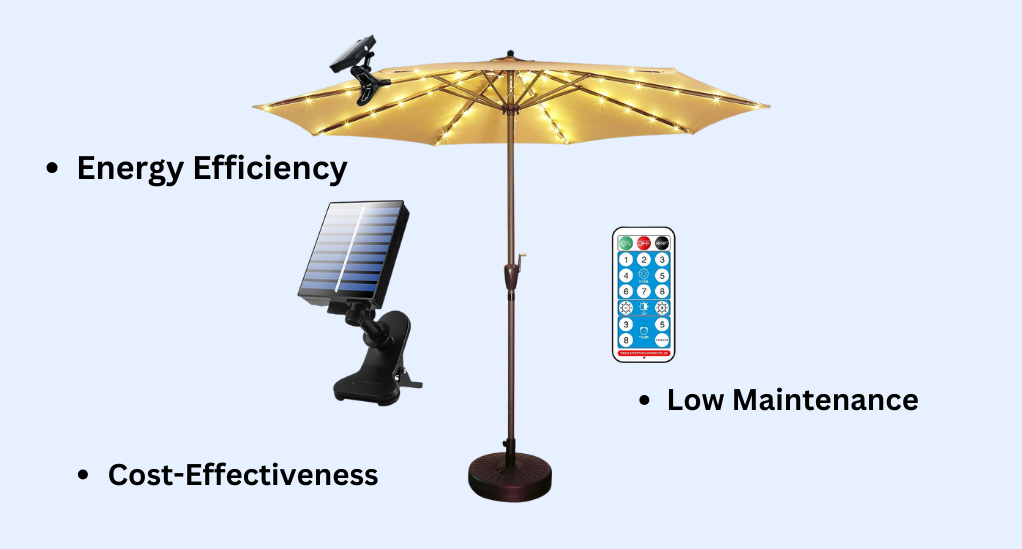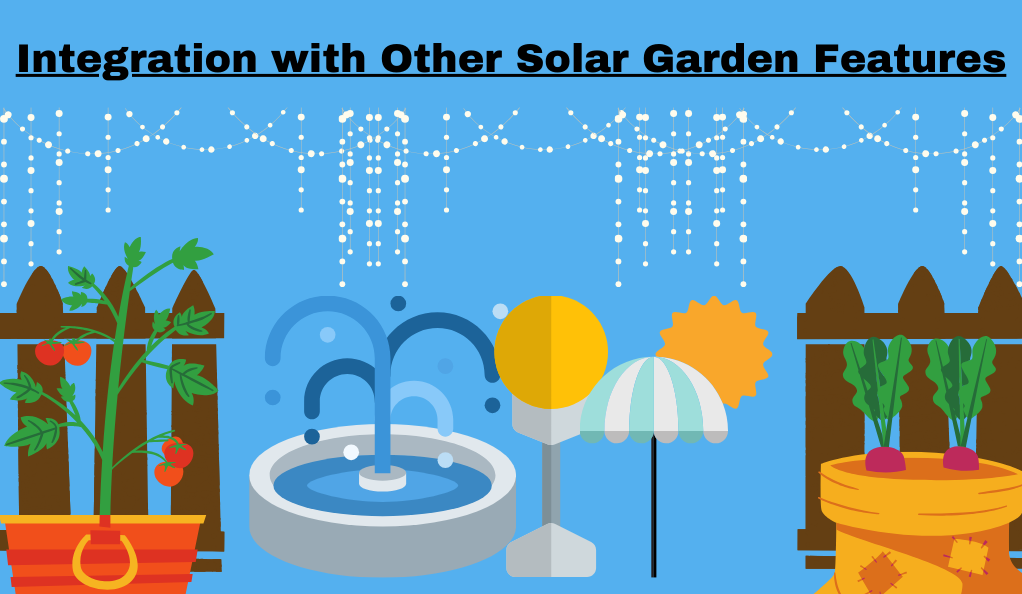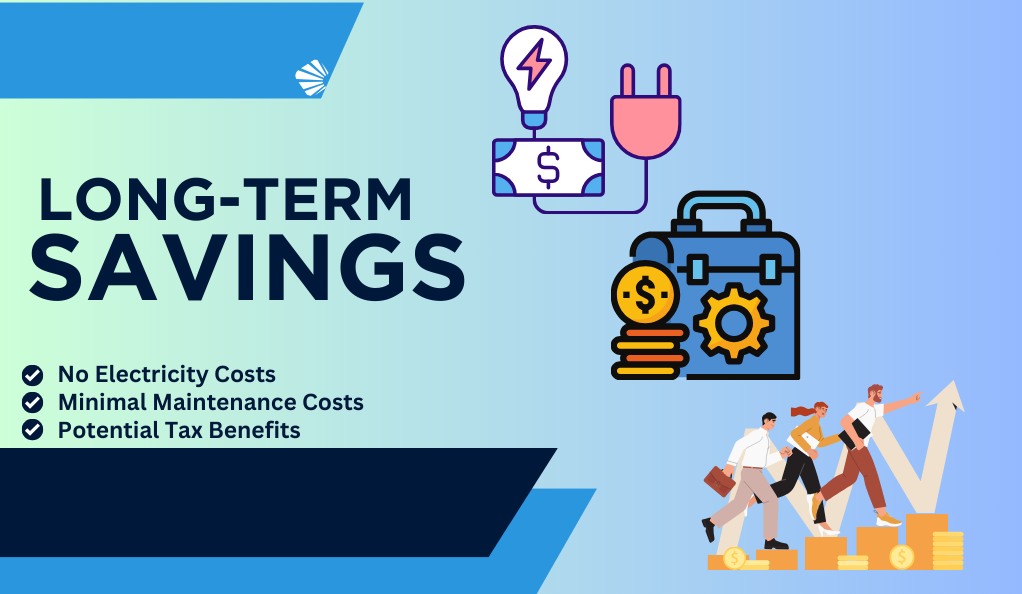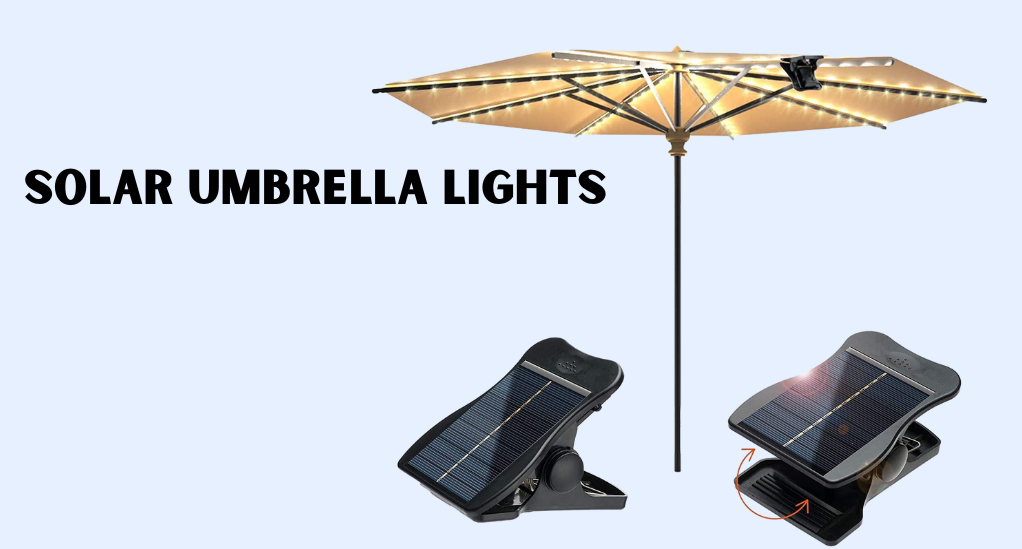In the heart of modern sustainable practices, solar umbrella lights emerge as a shining beacon, illuminating our outdoor spaces and enhancing our evenings with a touch of green. Their growth in popularity doesn’t just stem from their aesthetic appeal, but also from a conscious shift towards eco-friendly alternatives in outdoor lighting. As the world leans more towards green energy solutions, solar technology, including solar umbrella lights, has found its unique space in the sun.
Definition of Solar Umbrella Lights
Solar umbrella lights are lighting fixtures specifically designed to be attached to or integrated into outdoor umbrellas. These lights are powered by solar energy, with small photovoltaic cells—typically located atop the umbrella or on an attached solar panel—that collect sunlight during the day. As night falls, these lights transform stored solar energy into luminance, providing a gentle glow to your outdoor spaces.
Relevance in Sustainable Outdoor Living
Sustainability isn’t just a buzzword—it’s a way of life that many homeowners and enthusiasts are eagerly adopting. Traditional outdoor lighting often relies on electricity generated from non-renewable sources. In contrast, solar umbrella lights tap into the vast energy of the sun, a renewable and inexhaustible resource.
By choosing these solar lights, users take a commendable step in:
- Reducing Energy Consumption: Solar lights use the sun’s energy, meaning no additional power from the grid is required.
- Decreasing Carbon Footprint: With zero emissions, solar lights don’t contribute to the growing carbon footprint caused by conventional energy sources.
- Promoting Sustainable Designs: Manufacturers are now producing designs that are not just functional but also eco-friendly, using materials that have a lesser environmental impact.
The Rise in Solar Technology Usage
It’s impossible to discuss solar umbrella lights without acknowledging the broader surge in solar technology adoption. As per the International Renewable Energy Agency, solar energy’s global capacity has seen a dramatic increase in the past decade. This growth is not confined to large solar farms but also resonates in our backyards and patios in the form of solar garden lights, wall lights, and of course, umbrella lights. This rise signifies not only technological advancements but also a collective global shift towards sustainable living practices.
Advantages of Solar Umbrella Lights
Outdoor lighting has been a staple for many homes, playing a pivotal role in enhancing the ambience of gardens, patios, and decks. But with the introduction of solar umbrella lights, homeowners now have the chance to not only light up their evenings but also to do so sustainably. Here are the compelling advantages that solar umbrella lights bring to the table.

Energy Efficiency
Solar umbrella lights harness the sun’s energy, converting it into electricity to power the lights as night falls. This direct energy conversion process reduces wastage. Traditional lighting, on the other hand, often loses energy due to transmission and distribution when powered from a centralized grid.
Cost-Effectiveness
While the initial investment in solar lighting might be marginally higher than traditional lights, the long-term savings are significant. With no electricity bills and minimal maintenance costs, homeowners find that solar umbrella lights pay for themselves over time.
Low Maintenance
Solar umbrella lights come with a reputation for durability. Designed to be weather-resistant, they are made to withstand elements like rain, snow, and even the occasional hail. Furthermore, with no wiring or external power sources, homeowners have fewer components to worry about, leading to reduced maintenance needs.
Environmental Impact
Every step towards sustainability is a stride towards a healthier planet. Solar umbrella lights are more than just a trendy outdoor feature—they have tangible positive effects on the environment.
Reduction in Carbon Footprint
Solar lights operate without burning fossil fuels or emitting greenhouse gases. By choosing solar over traditional electric lights, you reduce the carbon emissions associated with electricity generation.
Usage of Renewable Energy
The sun provides an abundant, ever-present source of energy. Solar umbrella lights capitalize on this, ensuring that you’re using a renewable and sustainable energy source for your outdoor lighting needs.
Impact on Local Ecosystems
Artificial lighting can often disrupt local wildlife, especially nocturnal creatures. Solar lights, with their softer illumination and reduced blue light emissions, tend to be less disruptive, helping maintain a balance in local ecosystems.
Various Styles and Designs
Gone are the days when sustainability meant compromising on style. Modern solar umbrella lights come in a myriad of designs, catering to diverse aesthetic preferences.
Traditional vs. Contemporary Designs
Whether you have a penchant for classic designs or lean towards more modern aesthetics, there’s a solar umbrella light for you. From vintage-inspired lantern styles to sleek, minimalistic designs, the choices are vast and varied.
Integration with Other Solar Garden Features
For homeowners looking for a cohesive garden design, solar umbrella lights can be paired with other solar-powered features. Think solar water fountains, pathway lights, or fairy lights, all coming together to create a harmonious and sustainable outdoor setting.

Customization Options
Some solar umbrella lights offer features like adjustable brightness or color-changing LEDs, allowing users to set the perfect mood for every occasion. This level of customization ensures that the ambiance is always just right, reflecting the homeowner’s personal touch.
By understanding the many advantages, both in terms of sustainability and design flexibility, it becomes evident why solar umbrella lights are the preferred choice for many. Not only do they shine a light on your space, but they also illuminate the path towards a more sustainable future.
Installation and Maintenance
While the idea of introducing a new element to one’s outdoor space may seem daunting, the simplicity of installing and maintaining solar umbrella lights might surprise many.
Easy Installation Process
Solar umbrella lights are designed for hassle-free setups:
- No Wiring Required: Traditional outdoor lights often demand extensive wiring, which can be both time-consuming and costly. Solar umbrella lights eliminate this need entirely.
- User-Friendly Kits: Most solar umbrella lights come with complete kits, inclusive of mounting brackets, screws, and detailed instructions, making the installation process straightforward even for novices.
- Flexibility: Given their independent power source, these lights can be installed virtually anywhere the sun reaches, offering flexibility in placement.
Long-term Maintenance
Although solar umbrella lights are relatively low-maintenance, a few simple practices can extend their lifespan and ensure consistent performance:
Regular Cleaning: The photovoltaic cells should be cleaned periodically to remove dust or debris, ensuring optimal sunlight absorption.
Battery Checks: Over time, the batteries in solar lights may need replacement. Fortunately, these are often standard rechargeable batteries available at many stores.
Protecting During Severe Weather: While many solar lights are weather-resistant, in cases of extreme weather conditions (like hailstorms), it’s recommended to remove or cover them as a precaution.
Troubleshooting Common Issues
Solar umbrella lights are reliable, but like all devices, they may face occasional issues. Some common concerns and their solutions include:
- Dim Lights or Reduced Operating Hours: This could be due to decreased battery efficiency or obstructions covering the solar panels. Cleaning the panels or replacing the batteries often resolves the problem.
- Inconsistent Operation: Ensure the light sensor or switch isn’t being obstructed or malfunctioning. Sometimes, simply resetting the light can restore its functionality.
- No Power: Check if the lights are switched on and ensure they’re receiving adequate sunlight during the day. If the issue persists, battery replacement might be the solution.
Cost Analysis
As homeowners weigh the pros and cons of solar umbrella lights, one of the pivotal factors is cost. Here’s a closer look at the financial considerations:
Initial Investment
Solar umbrella lights often have a higher upfront cost compared to traditional lights. However, this investment includes solar panels, rechargeable batteries, and LED bulbs, all designed for longevity.
Long-term Savings
The real financial benefit of solar umbrella lights unfolds over time:

- No Electricity Costs: Operating entirely on solar power, these lights significantly cut down on monthly utility bills.
- Minimal Maintenance Costs: With durable designs and long-lasting LED bulbs, maintenance expenses are infrequent and often minimal.
- Potential Tax Benefits: In some regions, homeowners benefit from tax rebates or incentives for adopting solar products, further reducing the effective cost.
Rebates and Incentives for Solar Products
Governments and local authorities, recognizing the environmental benefits of solar energy, often offer rebates, tax deductions, or incentives. It’s worth checking local regulations and benefits when considering the purchase and installation of solar umbrella lights.
Customer Testimonials and Reviews
Nothing speaks to the value and efficacy of a product quite like the experiences of those who have adopted it. Solar umbrella lights are no exception. Across households and commercial spaces, they’ve found their place as a sustainable, aesthetic, and efficient solution. Here are some insights drawn from user testimonials and reviews.
Real-world Applications and Experiences
- Jane, a homeowner in California, shares: “Switching to solar umbrella lights was one of the best decisions for my patio. Not only do they provide a calming ambiance during evening gatherings, but knowing they’re powered sustainably makes the atmosphere even more special.”
- Richard, who runs a cafe in Texas, mentions: “Our outdoor seating has always been a hit, but adding solar umbrella lights elevated the dining experience. Customers love the warm glow, and we’ve received numerous inquiries about where we got our lights!”
- Linda from New York notes: “Living in a city, I wanted my rooftop to be an oasis. Solar umbrella lights, with their easy installation and low maintenance, fit perfectly. Rain or shine, they’ve been consistent and reliable.”
Photos and Stories from Happy Customers
On various online platforms, customers frequently share photos showcasing their beautifully lit outdoor spaces:
A family in Florida captured their backyard barbecue, with solar umbrella lights providing the perfect backdrop for a memorable evening.
A couple from Arizona showcased their anniversary dinner, highlighting how the soft luminescence of their umbrella lights created a romantic setting under the stars.
Recommendations for Various Types of Outdoor Spaces
Users often give recommendations based on their specific needs and the nature of their outdoor spaces:
- For smaller balconies: Many suggest opting for subtle string solar lights under the umbrella for a cozy feel.
- For larger gardens or patios: Robust lantern-style or pendant solar lights provide broader illumination and make a style statement.
- For commercial spaces like restaurants or resorts: Integrating color-changing or adjustable brightness features can help set different moods for different events or times of the day.
Conclusion
Solar umbrella lights transcend mere decoration, embodying our evolving values—towards our environment, our future, and our choices. They’re not just outdoor illumination; they represent a commitment to sustainability and responsible living. In a world where aesthetics and sustainability harmonize, solar umbrella lights serve as a beacon, guiding us towards a brighter, eco-conscious path. As daylight fades, these lights serve as a reminder that there’s always a sustainable way to light up our world.

